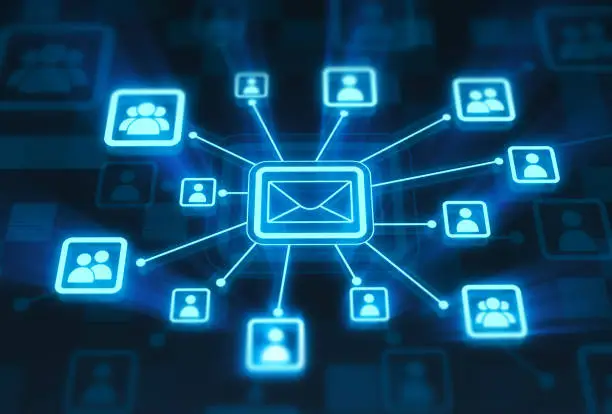In a world dominated by various digital marketing channels, email marketing continues to be one of the most effective ways for businesses to engage with audiences, nurture relationships, and drive conversions. Unlike social media, email marketing offers direct communication with your target audience, allowing you to tailor messages and deliver value right to their inbox. Below are the email marketing best practices.
-
Build a Quality Email List
Building an email list with high-quality leads sets the foundation for effective email marketing.
- Use Double Opt-In: Double opt-in requires subscribers to confirm their subscription through an additional email. This practice ensures that your subscribers are genuinely interested in receiving your emails, reducing the risk of high unsubscribe rates and spam complaints.
- Avoid Purchasing Email Lists: Buying email lists might seem like a shortcut to a large audience, but it can hurt your reputation and deliverability. Organic list-building through website sign-ups, lead magnets, and event registrations is more effective.
- Segment Your Audience: Organize your email list based on various factors like demographics, purchase history, or behavior. This segmentation allows you to send more relevant emails to specific groups, enhancing engagement and open rates.
-
Personalize and Customize Content
Personalization is essential to building a strong connection with your audience. Emails that feel relevant and personalized can significantly boost engagement.
- Use the Recipient’s Name: Include the recipient’s name in the subject line or greeting to grab their attention. Personalized subject lines often have higher open rates compared to generic ones.
- Send Behavior-Triggered Emails: Automate emails based on subscriber actions, such as welcome emails for new sign-ups, cart abandonment emails for potential buyers, and re-engagement emails for inactive subscribers.
- Create Dynamic Content: Dynamic content changes based on the subscriber’s profile. For example, an email promoting products can show different items depending on the subscriber’s past purchases or browsing behavior.
-
Craft Engaging Subject Lines
Your subject line is the first impression your audience gets. It needs to be compelling and relevant to encourage the recipient to open the email.
- Keep It Concise: Aim for subject lines between 6 to 10 words. This length works well for both desktop and mobile screens, ensuring clarity and avoiding truncation.
- Create a Sense of Urgency: Words like “limited time,” “exclusive,” and “last chance” can prompt users to take action quickly. However, be careful not to overuse urgency tactics as they can lose effectiveness over time.
- Test Subject Lines: A/B testing your subject lines can help identify what resonates best with your audience. Try different styles, lengths, and approaches to determine what drives the highest open rates.
-
Optimize for Mobile Devices
With mobile devices accounting for a significant portion of email opens, optimizing your emails for mobile users is critical.
- Use a Responsive Design: Responsive designs automatically adjust to different screen sizes, ensuring readability and usability on any device.
- Keep It Simple and Concise: Mobile users tend to prefer brief and focused content. Avoid long paragraphs, use short sentences, and include bold headlines that quickly convey your message.
- Utilize Buttons Over Links: Buttons are easier to tap on mobile screens compared to small text links. Make sure your calls-to-action (CTAs) are clear and accessible on mobile.
-
Focus on Delivering Value
Every email should offer something valuable to the reader, whether it’s helpful content, exclusive offers, or useful resources.
- Send Educational Content: Newsletters, industry insights, and how-to guides can provide valuable information to subscribers, positioning your brand as an industry authority.
- Provide Exclusive Offers: Incentives like discounts, free trials, and special offers for email subscribers create a sense of exclusivity and can drive higher engagement and conversions.
- Respect Your Subscribers’ Time: Avoid overloading subscribers with emails. Stick to a frequency that keeps your brand top-of-mind without becoming overwhelming. Monitor unsubscribe rates to gauge if you’re sending too often.
-
Use Clear Calls-to-Action (CTAs)
Your email should always have a purpose, whether it’s driving traffic to your website, promoting a sale, or encouraging sign-ups for an event.
- Make CTAs Stand Out: Use contrasting colors, bold fonts, and concise wording to make your CTA buttons clear and visually appealing.
- Use Action-Oriented Language: Phrasing like “Shop Now,” “Learn More,” and “Get Started” creates a sense of direction. Tailor the CTA language to match the intent of the email.
- Limit CTAs Per Email: Overloading an email with multiple CTAs can dilute its effectiveness. Aim to have one or two primary CTAs that clearly guide the reader toward the desired action.
-
Monitor Metrics and Optimize
Tracking and analyzing your email performance helps you understand what’s working and where there’s room for improvement.
- Open Rate: This metric indicates how many people open your emails. Low open rates could suggest subject lines need improvement or that your email frequency is too high.
- Click-Through Rate (CTR): CTR measures how many people clicked on a link or CTA in your email. A low CTR may indicate that your content isn’t engaging enough or your CTAs are unclear.
- Bounce Rate: High bounce rates mean that your emails aren’t reaching inboxes, potentially due to poor list hygiene. Remove inactive or invalid email addresses regularly to maintain a healthy list.
- Conversion Rate: This shows how many recipients completed the desired action (like making a purchase). A low conversion rate may require you to re-evaluate your offers, CTAs, or landing pages.
-
Leverage Automation
Email automation helps businesses streamline repetitive tasks and ensure timely communication with subscribers.
- Set Up Drip Campaigns: Drip campaigns are a series of emails sent to users over a specific period. For instance, you can automate welcome emails, post-purchase follow-ups, or event reminders.
- Use Cart Abandonment Emails: Cart abandonment emails remind users about items they left in their shopping cart. These emails can be a highly effective tool to recover potential lost sales.
- Send Re-Engagement Emails: For subscribers who have been inactive, a re-engagement campaign can rekindle interest. Offer a special incentive or ask for feedback to better understand why they haven’t engaged.
-
Comply with Data Privacy Laws
Respecting privacy laws and regulations is essential in maintaining trust with your subscribers and avoiding legal complications.
- Adhere to GDPR and CAN-SPAM: Make sure you’re complying with laws like the General Data Protection Regulation (GDPR) in Europe and the CAN-SPAM Act in the U.S. This includes allowing users to unsubscribe easily and never sharing their information without consent.
- Get Clear Consent: Explicitly ask for permission before adding anyone to your email list, especially if they are outside of your local jurisdiction. Transparency builds trust and improves email deliverability.
- Provide an Easy Unsubscribe Option: Every email should include a clear and accessible way for subscribers to opt-out. This reduces complaints and helps you maintain a clean list.
-
Keep Testing and Adapting
The email marketing landscape is constantly changing, and what works today may not work tomorrow. Regularly test, analyze, and adjust your strategy to stay effective.
- A/B Test Regularly: From subject lines and email layouts to CTAs and timing, test various aspects of your emails to understand what resonates best with your audience.
- Stay Updated on Trends: New technologies and trends, like interactive emails or AI-powered personalization, can enhance your strategy. Staying updated ensures you remain competitive and innovative.
- Gather Feedback: Occasionally ask your audience for feedback on your email content, frequency, and topics. Direct input from your subscribers helps you fine-tune your strategy.
Also Read: SEO Tips For Businesses: Boosting Your Online Presence And Driving Organic Traffic






